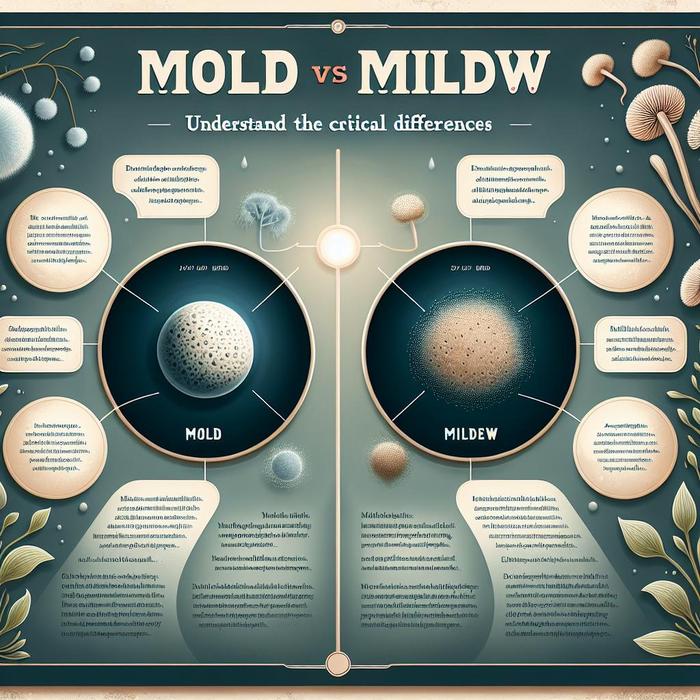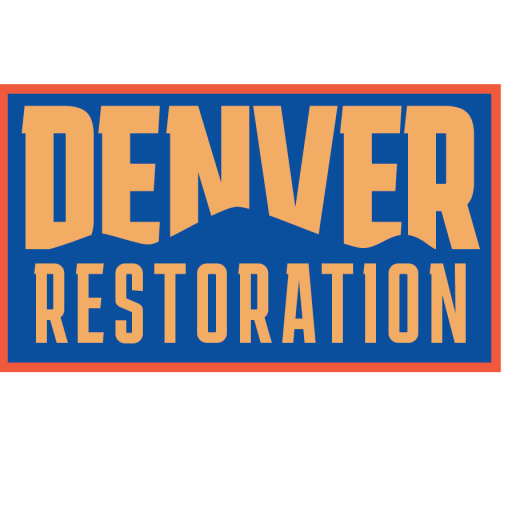Recognizing the Disparities: Mold vs. Mildew Difference
Imagine this: you walk into your basement or bathroom and notice some unusual spots on the walls. The sight leaves you quite concerned. Could it be mold or mildew? More importantly, does it matter? Well, the answer is yes. Identifying the crucial differences between mold and mildew is not just about curiosity; it has serious implications for your property, environmental, and health safety.
Basic Identifiers: Appearance and Smell
To the untrained eye, mold and mildew can appear strikingly similar. But a closer inspection will reveal some critical differences. Generally, mold is characterized by its fuzzy or slimy texture and can manifest in various colors such as green, black, or blue. It penetrates deep into the affected material, causing significant damage over time. Conversely, mildew is typically powdery or fluffy and is commonly white or gray. Unlike mold, mildew resides on the surface of the material, which makes it easier to clean.
In addition to visual markers, smell can be a determining factor in distinguishing mold from mildew. Mildew tends to emit a musty, dank odor, while mold produces a distinct and pungent smell.
Even though these basic identifiers aid in distinguishing mold from mildew, professional damage assessment and estimation are required for an accurate diagnosis and treatment plan.
Impacts on Your Home and Health
Both mold and mildew affect your property and health adversely, but in varying degrees. As stated earlier, mold can lead to severe structural damage due to its tendency to grow into materials. For comprehensive information about how mold can affect your home’s safety, particularly in damp areas like the basement, refer to the detailed guide on mold in basements provided here.
On the health front, exposure to mold can cause allergic reactions, respiratory issues, and in severe cases, neurological problems. Comparatively, mildew can also induce allergic reactions and respiratory problems, but its effects are usually less severe than those caused by mold.
Handling the Threat: Restoration Techniques and Equipment
Given their potential to cause significant property damage and health issues, immediate remediation of mold and mildew is critical. However, the restoration techniques and equipment used differ based on whether you’re dealing with mold or mildew.
For mildew, household cleaning agents and a scrubbing brush could suffice, given its superficial nature. However, mold, being potentially hazardous and deeply rooted, requires professional remediation. This often involves specialized equipment and solutions, thorough cleanup, and possibly major reconstruction.
Insurance and Legal Compliance
Due to the potential severity of mold damage, insurance and legal factors often come into play. In many cases, mold remediation can be covered under your homeowner’s insurance, provided it’s not due to neglect. It’s important to understand the finer elements of insurance coverage for mold damage, for which you can refer here.
In conclusion, it’s crucial to understand the differences between mold and mildew, not only to safeguard your property but also your health. For more detailed information about the differences between mold and mildew, you can refer to these detailed resources provided by the Environmental Protection Agency, The Spruce, and others. Remember, quick action and correct identification are essential for successful restoration and recovery from these unwelcome guests.
Moving forward, always be alert to the signs of mold and mildew in your home. Early detection and swift remedial action can save you from significant economic and health-related woes in the future. Be proactive, stay safe, and protect your property against these silent invaders.
Communicating with Experts: Importance of Customer Communication
In the alarming presence of mold or mildew, you may find yourself panicking or feeling unsure of the next course of action. This is completely normal. However, clear and prompt communication with damage restoration professionals can make the task less daunting and more systematic. Admitting a problem is the first step towards a solution. Communicating about the extent and specifics of your mold or mildew problem helps in formulating a well-guided treatment plan.
Interestingly, an open discussion about your fears, allergies, and safety concerns related to mold and mildew aids in addressing these issues through suitable remediation processes. Furthermore, updated talks about your property’s condition throughout the restoration process pave the way for transparency and modification, if required. Importantly, they establish a strong support system between you and the experts.
Every nook and corner of your property should be open to the professionals for comprehensive damage estimation and early detection of deeper problems, if any. Detailed discussions about the remedial process, its duration, and the requirement for temporary accommodation facilitate smooth planning and execution. Always remember—the more you express, the better the process will be.
Contingency Planning: A Step Towards Crisis Management
Before mold or mildew can wreak havoc in your home or subconscious, it is essential to design a contingency plan. Surprised? Yes, damage control in the form of crisis management is vital. This plan highlights fast and appropriate actions in the occurrence of unexpected mold and mildew growth or during the restoration process.
The aim is to minimize damage, health hazards, and disruptions. An essential aspect of a contingency plan is quick and effective communication between the distressed homeowner and the restoration professional. Rapid reportage of mold sightings or health issues can help in instant action against escalating damage.
Another pertinent feature of this plan is adaptability. A competent crisis management stratagem features appropriate adjustments based on ongoing observations and changes. The more responsive the plan, the more successful it gets in limiting the destructive potential of the crisis situation.
Remember, preparedness is half the battle won. A robust contingency plan supports and shields you and your property when faced with the harsh reality of mold or mildew infestation.
Keeping Fear at Bay: The Necessity of Environmental and Health Safety
Mold and mildew growth can certainly be a cause for anxiety, given their potential health and environmental implications. Fear can creep into your mind, making the restoration process appear more intimidating than it genuinely is. But, dwell not in fear! An expert damage restoration team signifies extensive care for environmental and health safety.
The restoration process involves environmentally-friendly techniques and tools, ensuring minimal harm to your surroundings. Furthermore, safety precautions and strict adherence to health protocols keep away potential health hazards.
Pertinently, expert tips on how to remove mold from your bathroom ceiling and other indoor spaces can be referred to from time to time, serving as preventive measures. Guided professional advice to control musty odors in your basement can help keep such odors at bay, leading to a safer living environment.
Remember, your health and safety are always prioritized.
Staying Aware: Informative Resources and Proactiveness
Managing mold and mildew involves a healthy balance of being proactive and staying informed. Some mold and mildew types can be more harmful than others. Customer education plays a huge role in mold and mildew management. Extensive resources like a detailed guide to mold vs. mildew are available to keep you well-informed and prepared. Further readings on mold vs mildew can be referred to from an informative guide on www.cleanerguys.com.
Staying proactive is another significant aspect. Before mold and mildew even have a chance to set in your home, several preventative measures can be set in place. Ensuring proper ventilation, checking damp areas, cleaning regularly and deeply, and treating any detected mold or mildew spots instantly can go a long way in preventing a bigger problem.
In the face of a mold or mildew crisis, remember that armed with knowledge and professionals just a call away, you’re well equipped to handle it. Undoubtedly, this can be a challenging time, but keep in mind that every hurdle comes to an end, and soon, your property will be free of these silent invaders. With expert remediation, resilient crisis management, and accurate identification, molds and mildews won’t stand a chance. So, stay informed and stay safe – you’ve got this!

